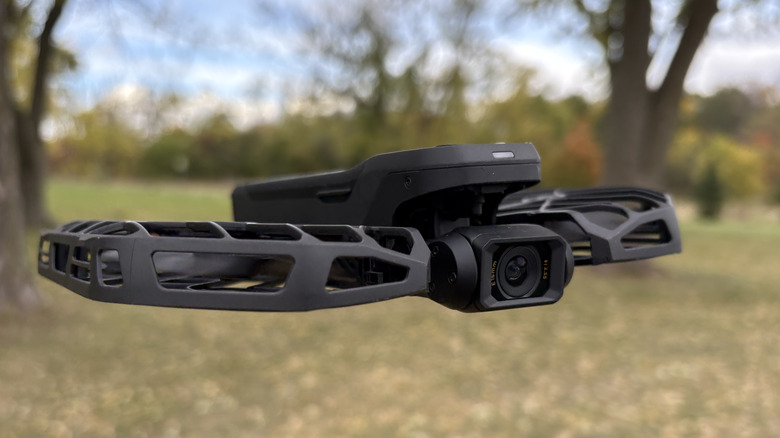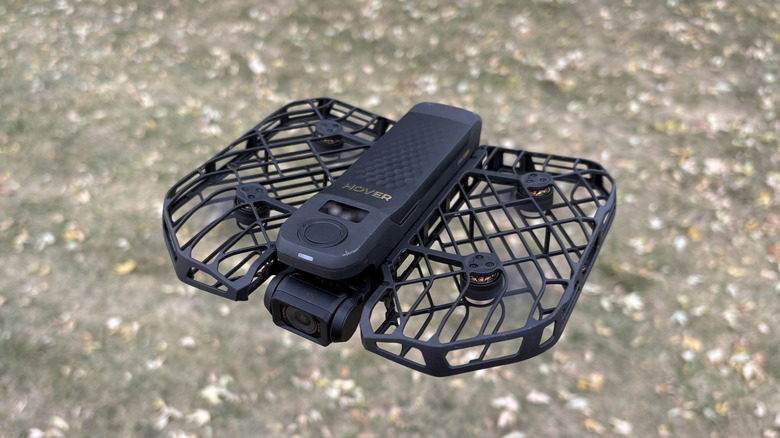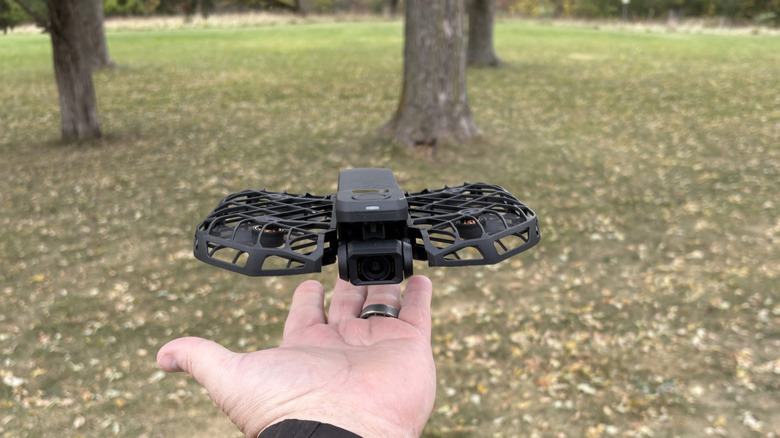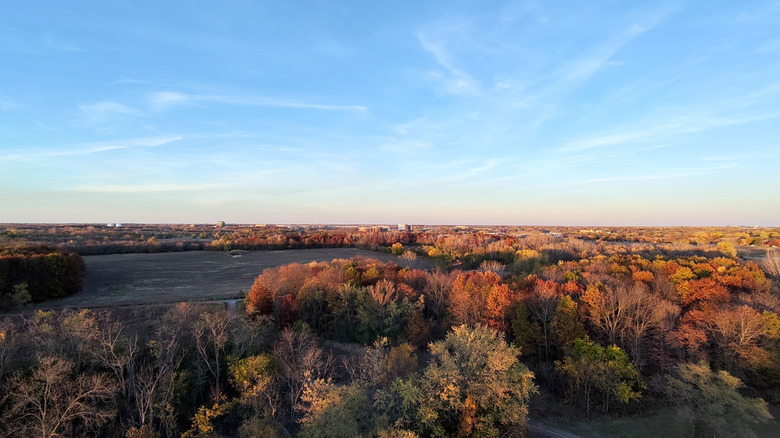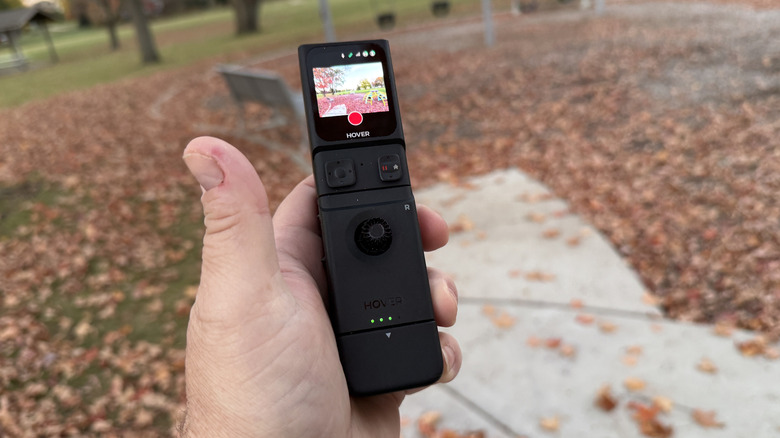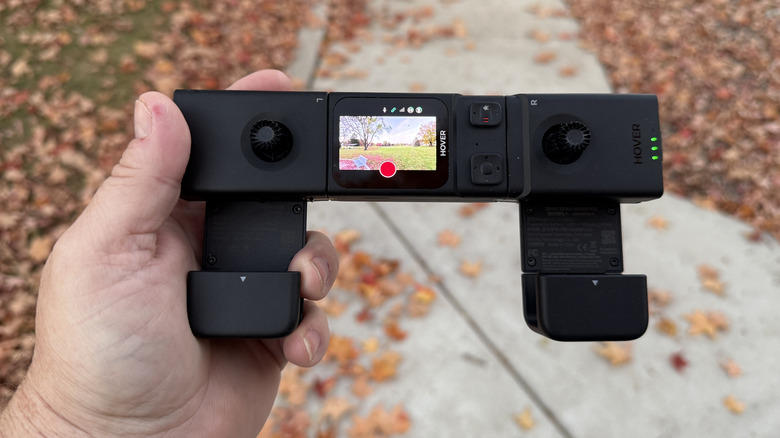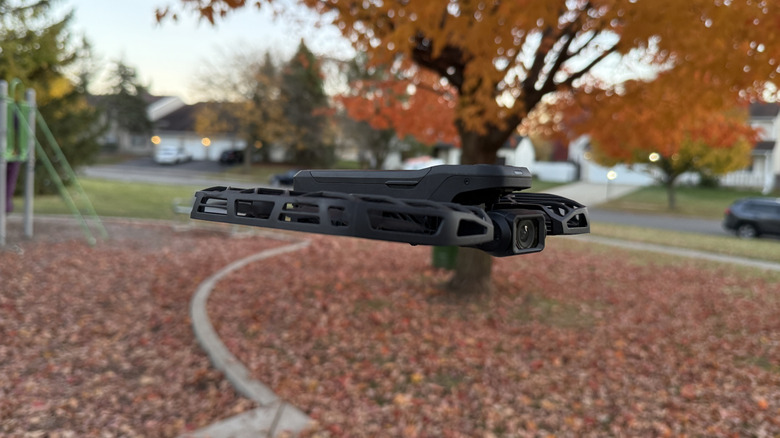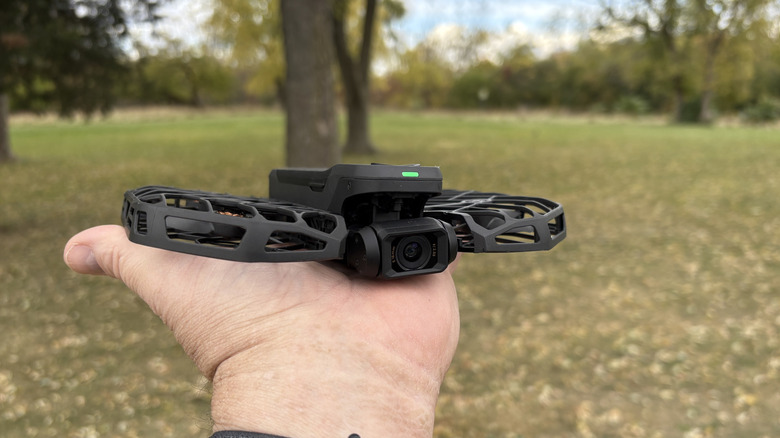HoverAir X1 ProMax Review: A Nice Drone Cheese Pizza With Too Many Toppings
- Easy to use in its most basic form
- Below 249 grams (just over half a pound)
- Ambitious ideas
- Good image quality
- Short battery life
- Doesn't quite do some of the things it promises to do
- Ideas more ambitious than execution
- Little obstacle avoidance
Whenever I try a new pizza place, I always order cheese pizza first. The theory is, make sure they get the basics right before you add on. I guess you could say the same about a lot of technological categories. In the case of drones, HoverAir has a really solid cheese pizza. The HoverAir X1 (the first drone from Zero Zero Robotics — the predecessor to the one we're reviewing here) is a cute little drone with some very basic functionality. It's more of a flying camera than a "drone" by the strictest definition.
Then, Zero Zero Robotics started adding toppings. The HoverAir X1 ProMax is, by comparison to its smaller sibling, quite a bit more drone, while still retaining its smaller form factor and ease of use functionality. But then, Zero Zero added more capabilities, and that's when (to switch metaphors) the wheels started to fall off a little bit.
The Hoverair X1 ProMax is the best of the best in the lineup, with the most capabilities, but it's also the most complicated. If done right, it would be an impressive set of features to add to your drone lineup. Unfortunately, the execution is another matter. I've been using a HoverAir X1 ProMax drone review sample provided by Zero Zero for just over a week, and this is my full review.
Hardware tour
The HoverAir X1 ProMax is small, weighing around 192 grams (just over half a pound) which makes it light enough to not require registration with the FAA. Registration is not hard, but it's one less thing to worry about. The drone consists of a main body, into which the battery is inserted, with a small screen and three buttons on top in the front of the drone. This screen and buttons allow you to power the drone on and off, choose modes, and launch the drone.
The 8K camera is located on a gimbal just below the nose, as it typical for more consumer drones. The gimbal can rotate about 30 degrees to the left and right, and near 360 degrees up and down. It's capable of recording in 8K at 30 fps or 4K at 120 fps.
The drone blades are enclosed in a rigid polycarbonate cage that makes the drone safe-ish to take off and land from the palm of your hand. If you wanted to, you could definitely manage to stick your digits into the cage while the drone is running, but it would almost certainly be your fault, not the drone's.
The Basics
The HoverAir X1 is a pocket-sized little drone that folds up into a tiny little bag. Its features are simple and intuitive. Select the mode you want, press the button, and the drone lifts up off your hand, flies a pattern (shooting a photo or video) and then lands back in the palm of your hand. The HoverAir X1 ProMax does all of that too. Zero Zero made a few neat additions to the X1 in order to develop ProMax version.
The X1 ProMax can fly over water or snow — a capability missing on the X1. The camera steps up from 2.7K to 8K. The range gets a boost from 30 meters to up to one kilometer. The Pro Max also gets ton of accessories which we will get into shortly.
But at its core, the HoverAir X1 ProMax is a souped up HoverAir X1 with all the same capabilities and functions including following, dolly track shots, orbit camera shots and more. What I really love about the HoverAir X1 and its larger sibling is how literally anyone can take it out of the box, press a couple of buttons, and be off to the races.
As mentioned, the camera sensor can capture 8K at 30 fps or 4K at 120fps. Zero Zero doesn't say much else about the sensor itself — size, aperture, etc. What I can tell you is that the image quality is quite good — on par with anything I've ever seen a flying camera capture.
Keep it simple
Without getting too complicated, I fired up the HoverAir X1 ProMax in follow mode, hopped on my bike and went about a mile with it following me the entire way. I went under trees, around corners, on the sidewalk and on the street, and it did not miss a beat up to about 15 miles per hour.
In other tests, I selected the mode I wanted, pressed the button, and it flew up and navigated through its pattern and came back, landing in my hand without a hitch. It's ridiculously intuitive. Obstacle avoidance is just okay when in following mode, but it's non-existent in any other mode. Some actions like asking the drone to follow you while crawling under an open A-frame ladder, or between cars in a parking lot can get harrowing.
According to Zero Zero, the HoverAir X1 ProMax can fly for 16 minutes on a single battery charge, which varies greatly depending on whether you're recording or not, how the wind is, etc. I would say 16 minutes is definitely on the high end, according to my testing. Whatever the case, it's certainly enough to grab a few amazing selfie videos on your adventures. It's when you add the accessories that makes the drone simultaneously cooler, but also more prone to failure.
Accessories available
Zero Zero got really creative when it comes to the accessories. It add a lot of functionality to the drone, which is a great idea. Starting off, there's the beacon. This device is a small cube that connects to your drone and allows you to control it remotely. You can choose the mode it's flying in, and even preview the image it's taking in. You can start and end recordings, and even snap photos. According to Zero Zero, the beacon should also serve as a homing device, allowing the drone following you to find you again should you go around a blind corner. I did not find this to be the case. The few times I ducked around a corner, the drone just stopped and waited for me to reappear. Based on Zero Zero's description, I would have expected some kind of AI to kick in and get the drone to move forward and around the corner and search me out. That did not happen.
You can attach the beacon to a controller which turns the drone into more of a flying machine that I'm accustomed to. When you attach a single controller, the drone flies very similarly to the DJI Avata 2 with one key difference. On the Avata 2, when you turn your hand to one side or the other, you turn the drone. With the HoverAir X1 ProMax, the same action just strafes the drone left and right. It's a small but important difference that makes the HoverAir X1 ProMax a bit harder to fly.
Full controller mode
You can also attach a second controller to the top of the beacon, rotate the whole thing 90-degrees and have a full-fledged controller with two joysticks. The beacon still transmits video, so you can see where you're going.
According to Zero Zero, you can also attach a USB-C cable to your phone and view the camera through that screen. I was not able to get that to work. I couldn't seem to connect both the phone and the beacon to the drone — it was one or the other. I used the included USB-C to USB-C cable and my own cable and neither worked. I was able to view the video feed just fine through the beacon, so I wasn't worried about it.
When the controller is in that mode, there are clips you can drop down to hold your phone in place — like a normal drone, but even that is flawed, because when you put your phone into that holder, it blocks out the bottom corners of the display. All of this is becoming a theme.
Too many wrenches in the gears
The potential for this drone is really solid — I like what Zero Zero is doing here, especially considering that DJI is directly cutting into its turf with the DJI Neo. But, the whole package feels a little incomplete. It's as if Zero Zero had big ambitions and just couldn't get all the details right in between where it was and where it wanted to go.
It wants the beacon to be a homing device, but can't quite get obstacle avoidance or beacon location right. It wants to be a drone you can fly one-handed, but didn't think through the controls. It wanted to be able to fly the drone with a full remote, but it doesn't transmit video to your phone properly. There are just a lot of small misses that add up to a bigger frustration.
Meanwhile, some of its other accessories are solid — the cycling bag is comfortable to wear, and even splits down the middle, saddle bag style. Meanwhile, there's also a charging case you can carry the drone in. The use-case Zero Zero told me about was having the drone follow you skiing down a mountain, and charging it in the charging case while you're on the chair lift.
Those are all good ideas. The cheese pizza is solid, but the toppings are all out of balance.
Price, Availability, and Verdict
The HoverAir ProMax is available from Zero Zero's HoverAir Store, starting at $699, depending on which accessories you go for. The Basic combo for $699 includes the drone, two batteries, the charger, a USB-C cable, a 65W plug, and a carrying case.
Overall, Zero Zero Robotics has a good idea here. It has gotten a lot right with its base model drone and now it wants to expand, but I think it expanded too much, too soon, without stopping to make sure it got everything right along the way. Fast is good, but not at the expense of the details.
It's hard to recommend the HoverAir X1 ProMax at this price point — it's a good drone, but only if you want to fly it as a normal drone. If you want a flying camera to follow you on your bike rides, or hikes along the beach, and you only occasionally want to aim it on your own, this isn't a bad buy, but you're probably better served going with the HoverAir X1 for $349 from Amazon or the HoverAir Pro for $499 direct from the HoverAir Store – both of these we'd likely rate above the ProMax given its price-vs-value proposition. Ultimately, I think Zero Zero can get there, but I just think this one (ProMax) is not quite done cooking.
